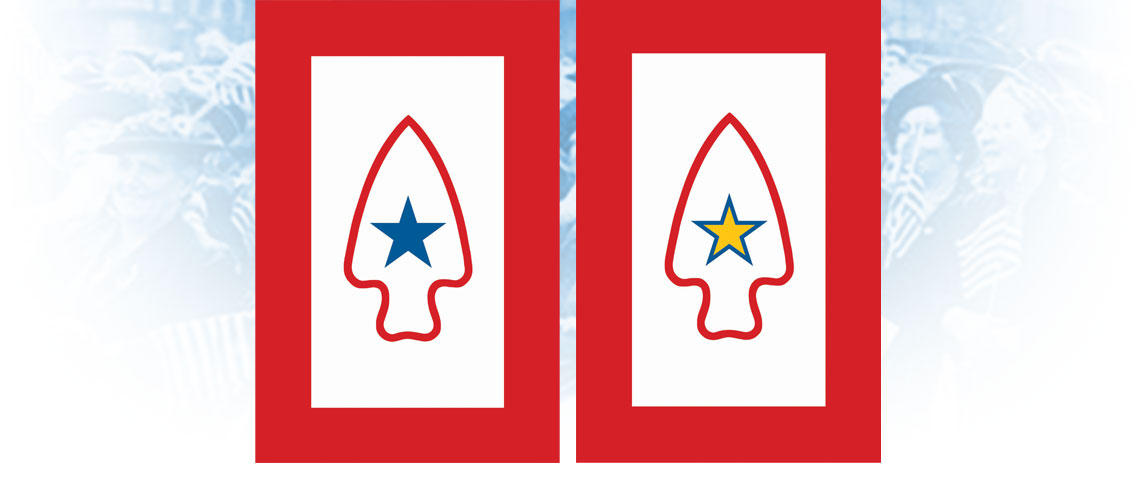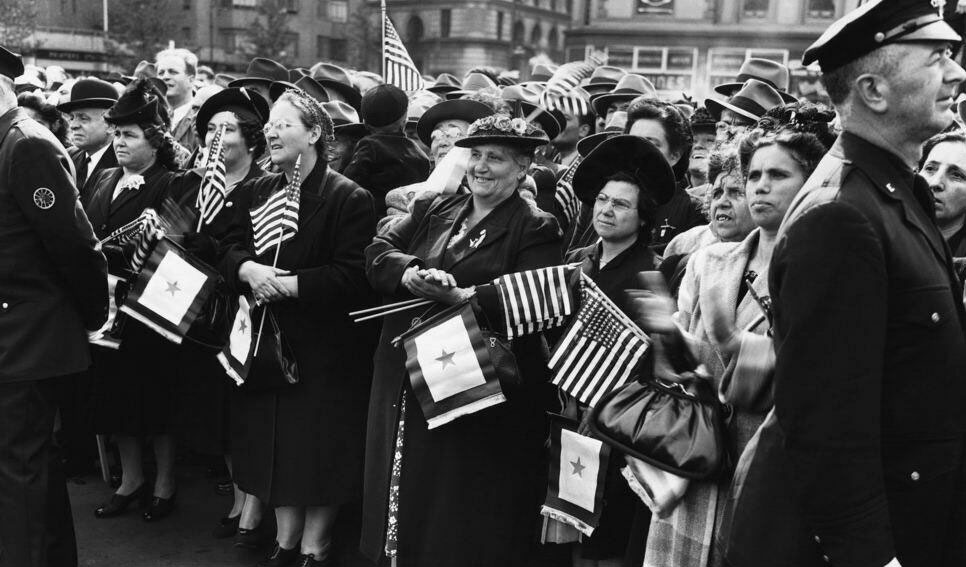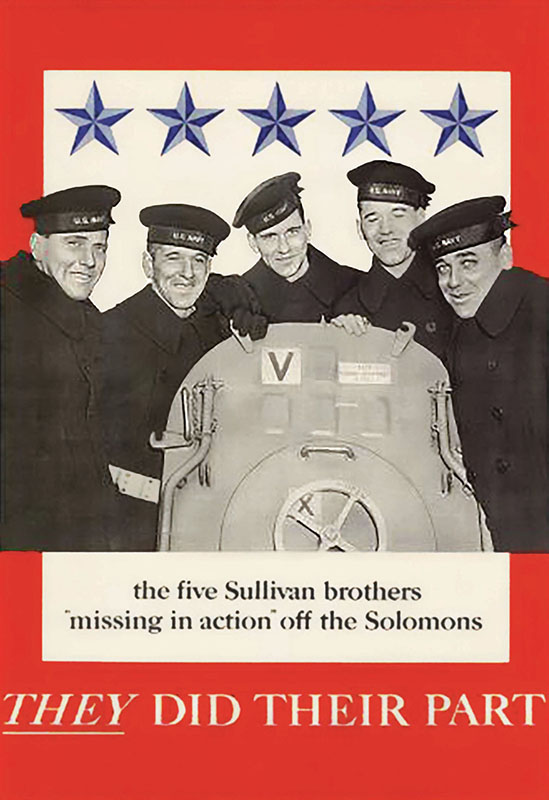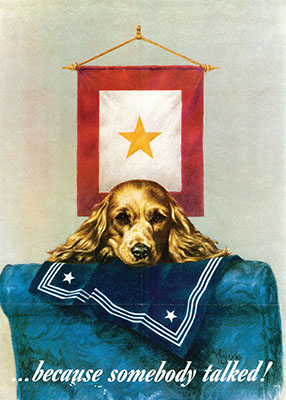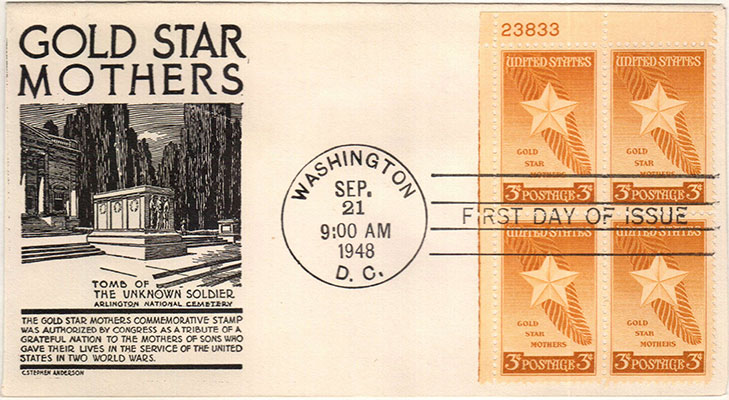ABSTRACT
USASOC customized the Blue Star Service banner to instill parental and family pride in loved ones who volunteered to serve in Army Special Operations Forces during wartime. It reinforces the spirit of a united ARSOF family. The reunification of Gold Star with Blue Star Service emphasizes that it was an ARSOF soldier who made the supreme sacrifice to preserve liberty in America.
DOWNLOAD
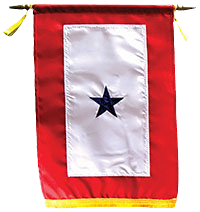
The U.S. Army Special Operations Command (USASOC) has decided to rekindle a hundred-year-old tradition honoring wartime military service. The new Army Special Operations Forces (ARSOF)-unique Blue Star Service Banner unites our families in pride of national service during conflict. It will remind all that ARSOF is ‘the tip of America’s spear.’
The Blue Star Service (BSS) banner tradition dates to World War I. Captain Robert L. Queisser, 5th Regiment, Ohio Volunteer Infantry (State Militia), wanted to honor his two sons’ overseas military service in 1917. He created a red, white, and blue banner featuring a blue star for each son to hang in the front window to show his pride in their patriotism .1
The Governor of Ohio, James M. Cox, had the following read into the Congressional Record on 24 September 1917: “The mayor of Cleveland, the Chamber of Commerce, and the Governor of Ohio have adopted this service flag. The world should know of those who give so much for liberty. The dearest thing in all the world to a father and mother–their children. ”2 The banner quickly became a symbol for families with children serving in the war. The practice was stimulated by articles in National Geographic and Popular Mechanics magazines .3
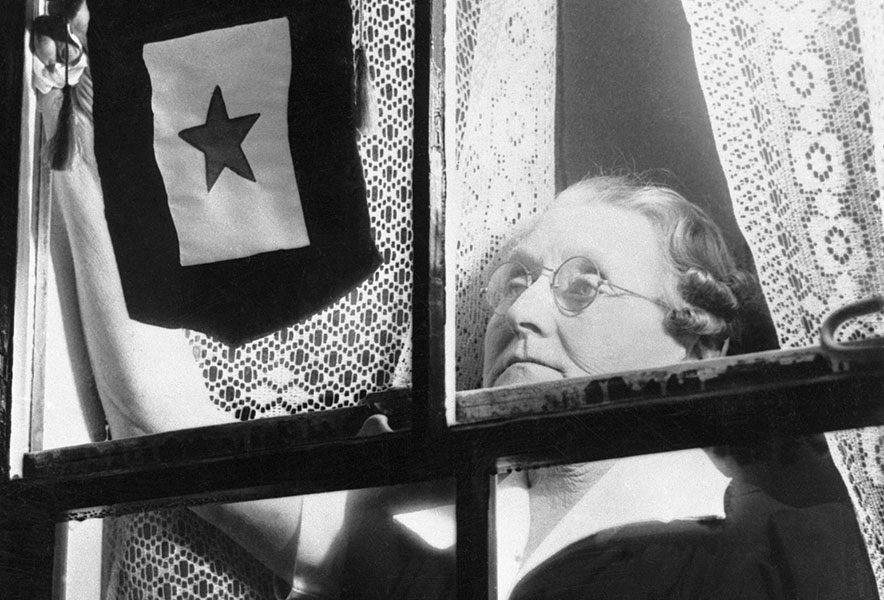

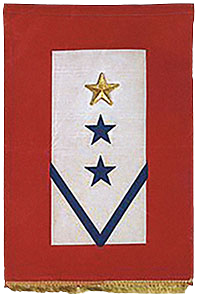
The original BSS banner (approximately 8.5 by 14 inches) was red with a white field to accommodate as many as five blue stars vertically (representing five in service). Expanding on the BSS banner philosophy, President Thomas Woodrow Wilson in 1918 endorsed a request from the Women’s Committee of the Council of National Defense whereby mothers who lost a child in military service during wartime could affix a gold star to their mourning armband .4 This led to a smaller gold star being placed on the highest blue star of the BSS banner. BSS Mothers and Gold Star Mothers (GS) formed veterans’ service organizations .5
During World War II, the practice of displaying Blue Star banners started anew. The War Department issued banner dimensions (most were handmade) and display guidelines .6 The most famous banner commemorated the five Sullivan brothers who died when their light cruiser USS Juneau (CL-52) was sunk in the naval Battle of Guadalcanal at night on 13 November 1942. The Sullivan family BSS with five stars and a photo of the five sailors became a ‘Support the War Effort’ poster .7
Although the tradition of BSS banners was not embraced during the Korean and Vietnam Wars, the Department of Defense (DoD) authorized a service flag and a lapel pin in 1969 (DoD Directive 1348.1) as specified in U.S. Code 179-182. The American Legion tried to rekindle pride in those serving military men and women after 11 September 2001 by freely distributing BSS banners to families nationwide [the Queisser patent (6 November 1917) had long expired] .8 Numerous cities across America demonstrated pride in those serving by installing personalized Blue Star Banners along main thoroughfares .9 In 2010, the 111th Congress declared that home owner associations could not restrict GS or BSS banner display by members (Blue Star/Gold Star Act of 2010 [S.3477] .10
The Army resumed the GS banner tradition during the GWOT. By presenting the ARSOF BSS banner stickers to parents and families of soldiers graduating from the Special Forces, Psychological Operations, Civil Affairs courses and ARSOF assessment programs, USASOC will instill parental pride. And, this practice allows parents and families to demonstrate support for sons, daughters, brothers, sisters, and loved ones who volunteered to serve in ARSOF units.
These banner stickers wordlessly convey sacrifice, pride, service to country, and signify that a loved one is away at war .11 ARSOF BSS banner decal/stickers containing a blue-bordered Gold Star connect the Gold and Blue Star families. It reminds all that a Blue Star ‘begat’ the Gold Star. Both programs will be bolstered. The two banners remind all that this Global War on Terrorism continues to touch every neighborhood in America .12
